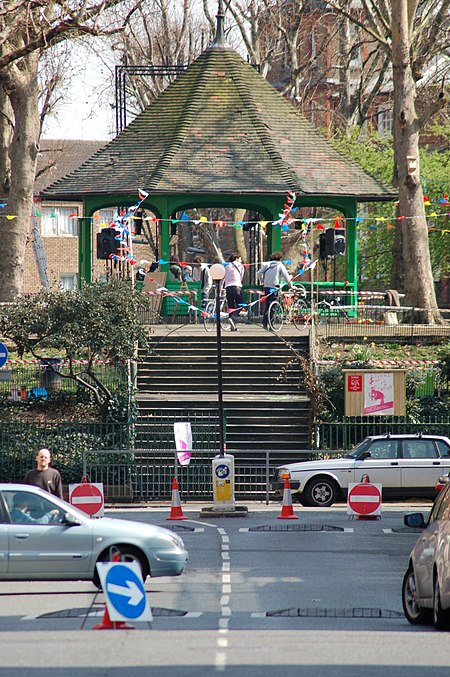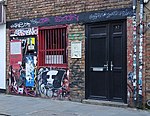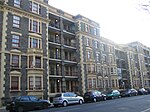Boundary Estate

The Boundary Estate is a housing development in Shoreditch, formally opened in 1900, in the far west of the East End of London, England. It is in the London Borough of Tower Hamlets and its western limit, Boundary Street, is within the London Borough of Hackney. The estate, constructed from 1890, was one of the earliest social housing schemes built by a local government authority. It was built on the site of the demolished Friars Mount rookery in the Old Nichol, with works begun by the Metropolitan Board of Works in 1893 and completed by the recently formed London County Council. Soil from the foundations was used to construct a mound in the middle of Arnold Circus at the centre of the development, surmounted by an extant bandstand. The estate consists of multistorey brick tenements radiating from the central circus, each of which bears the name of a town or village along the non-tidal reaches of the Thames.
Excerpt from the Wikipedia article Boundary Estate (License: CC BY-SA 3.0, Authors, Images).Boundary Estate
Rochelle Street, London Whitechapel
Geographical coordinates (GPS) Address Nearby Places Show on map
Geographical coordinates (GPS)
| Latitude | Longitude |
|---|---|
| N 51.526 ° | E -0.074 ° |
Address
Rochelle Street
Rochelle Street
E2 7JU London, Whitechapel
England, United Kingdom
Open on Google Maps







